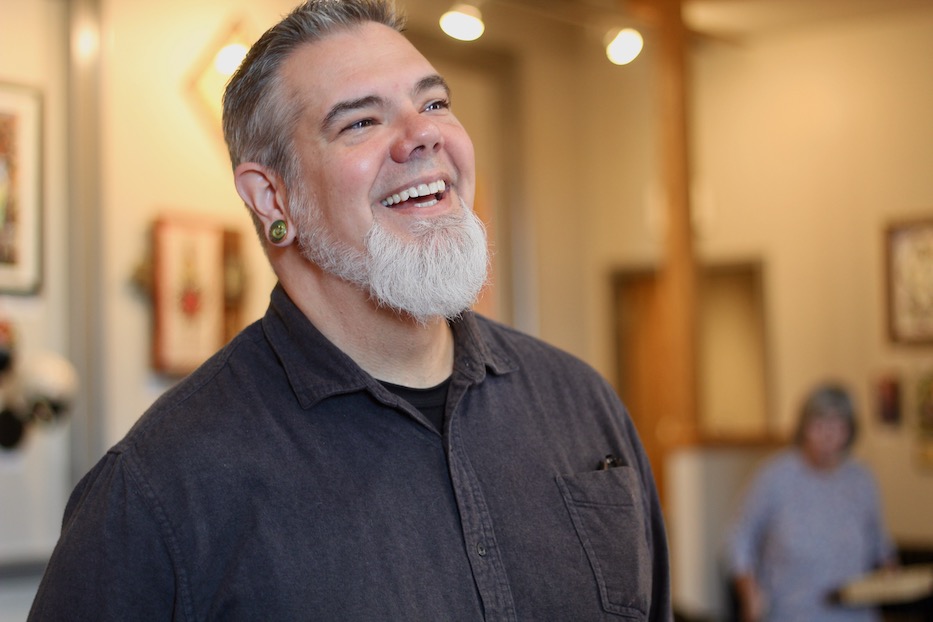
Culture & Community | Milford | Milford Arts Council | Tattoo | Arts & Culture
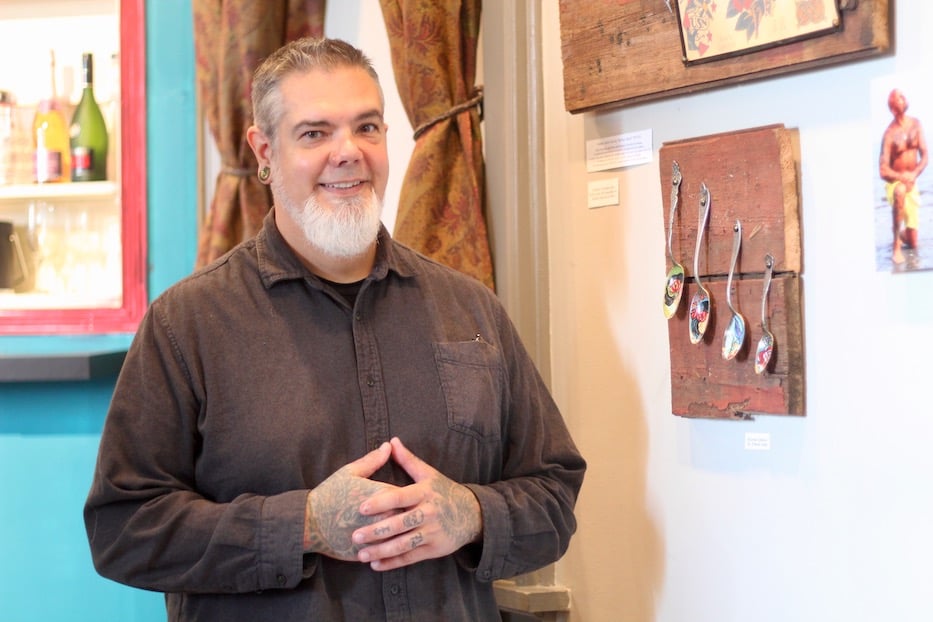
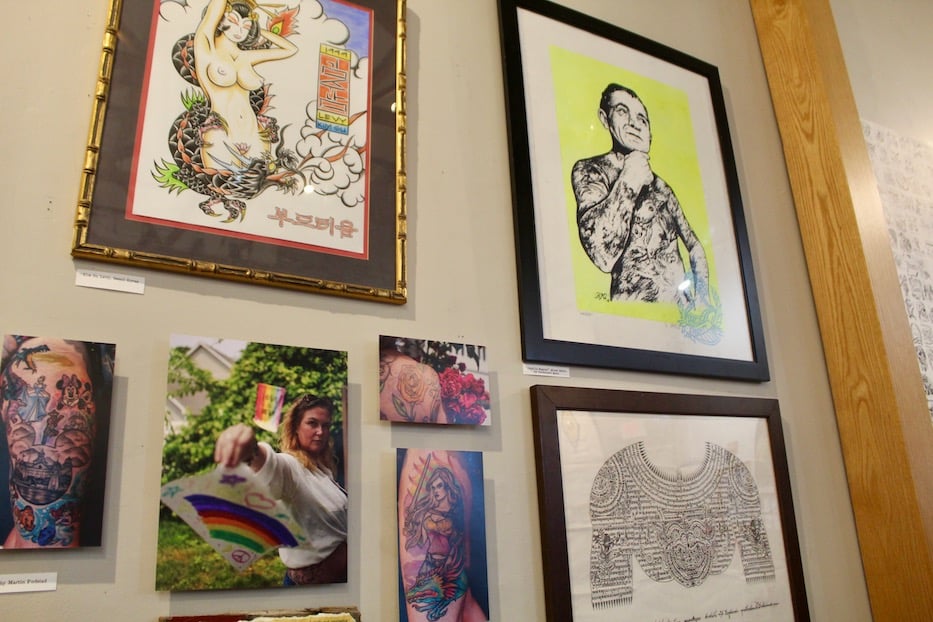
"I think my hope was definitely to present this work to a part of the public that hasn’t specifically had an interest in or exposure to tattoos, and show them the history,” said Jim LoPresti. Tattoo Tribe: The Indelible Connection runs through Oct. 26 at the MAC.
Each frame tells a different part of the same story. In the upper right, there's Charlie Wagner, once crowned Tattoo King of the Bowery for his service to the art form. Beneath it, there’s a chest and sleeves covered in Samoan tattoo designs, so delicate and ornate it looks like chainmail. To the left, a bouquet of fresh roses peeks out from the background, matching the shoulder tattoo that fills the remainder of the frame.
The history they have, apart and together, is woven into Tattoo Tribe: The Indelible Connection, running at the Milford Arts Council (the MAC) through Oct. 26 of this year. Part history, part storytelling and all heart, the exhibition features the collection and work of tattoo artist Jim LoPresti, who runs Lucky Soul Tattoo with his wife, the artist Tracey Rose, in Woodbridge.
Installed in the MAC's multi-purpose performance space, the show is accessible during gallery hours and arts events, and includes a panel discussion with LoPresti on Oct. 6 and closing reception with live music on Oct. 26. More information is available here.
"I think my hope was definitely to present this work to a part of the public that hasn’t specifically had an interest in or exposure to tattoos, and show them the history,” he said on a recent walkthrough of the show, pausing as the gallery rattled and swayed with passing trains. “It [tattooing, tattoo art] creates this real connection between people. I hope people come and see it in a different light.”
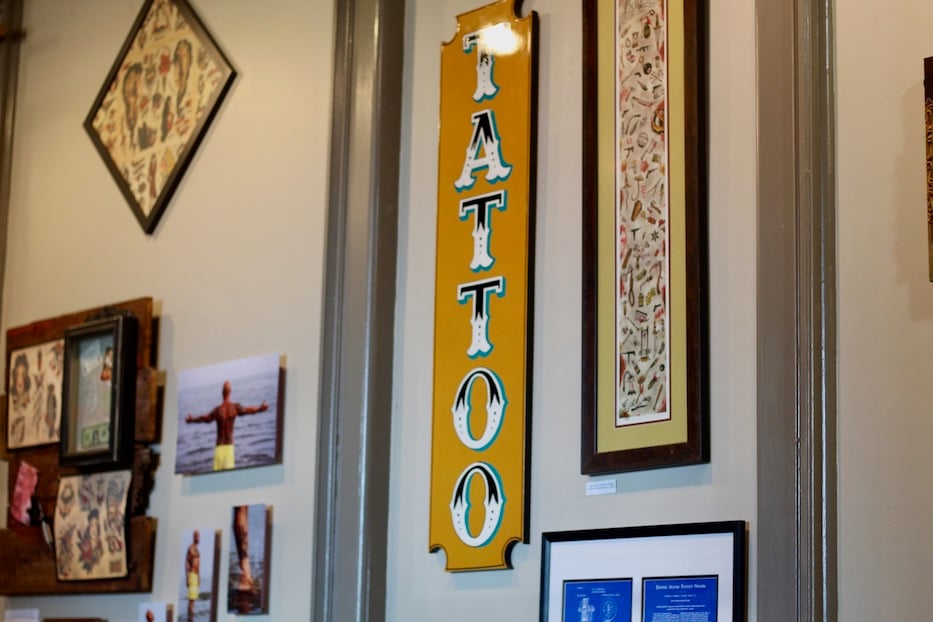
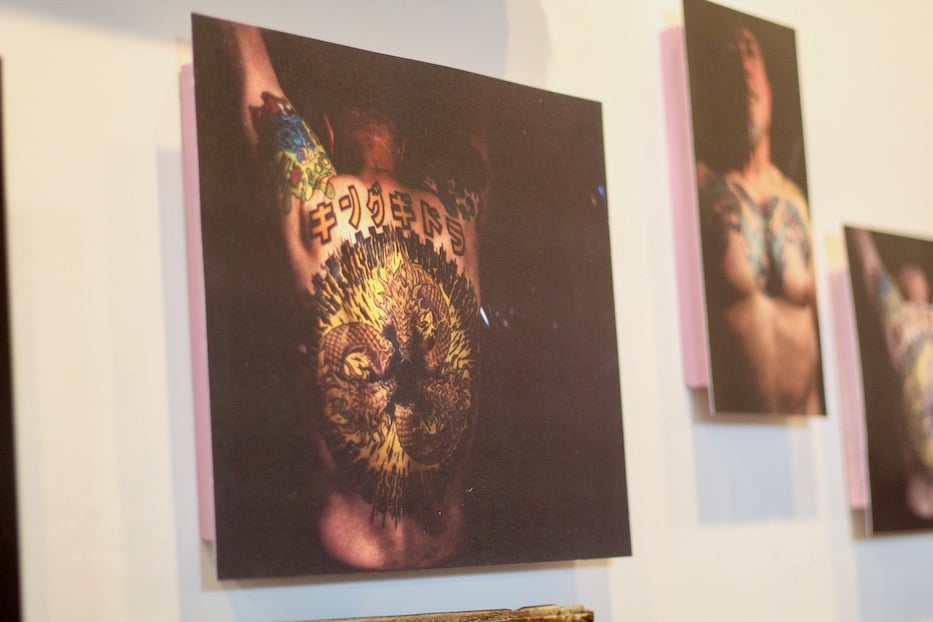
Images of and testimonials from Lucky Soul clients, from photographer Martin Podsiad, give the show a sense of intimacy.
If his sprawling, centuries-spanning collection has anything to do with it, they will. Installed salon-style in the space, the exhibition takes a broad and expansive look at tattoo art and culture, using ephemera, photography, candid client portraits and testimonials, now-retired equipment, and tattoo-adjacent and inspired fine and folk art to paint a fuller portrait of the role tattoos have played in global culture for centuries.
On one wall, for instance, LoPresti shows several early twentieth-century German trading cards that display a series of African faces and heads adorned with ritual tattoos and piercings (yes, the colonialism makes them squirmy and yes, they’re still fascinating as a historical document). Beside them, a print of Norman Rockwell’s 1944 “Tattoo Artist” from the Saturday Evening Post brings a viewer right into the more recent present, pulling them out of one historical context and placing them in another.
On another, LoPresti has hung bright, framed tattoo patterns that have stood the test of time, from roses opening petal by red petal to a skull and crossbones to naval ships, some with masts high, outstretched and flying.
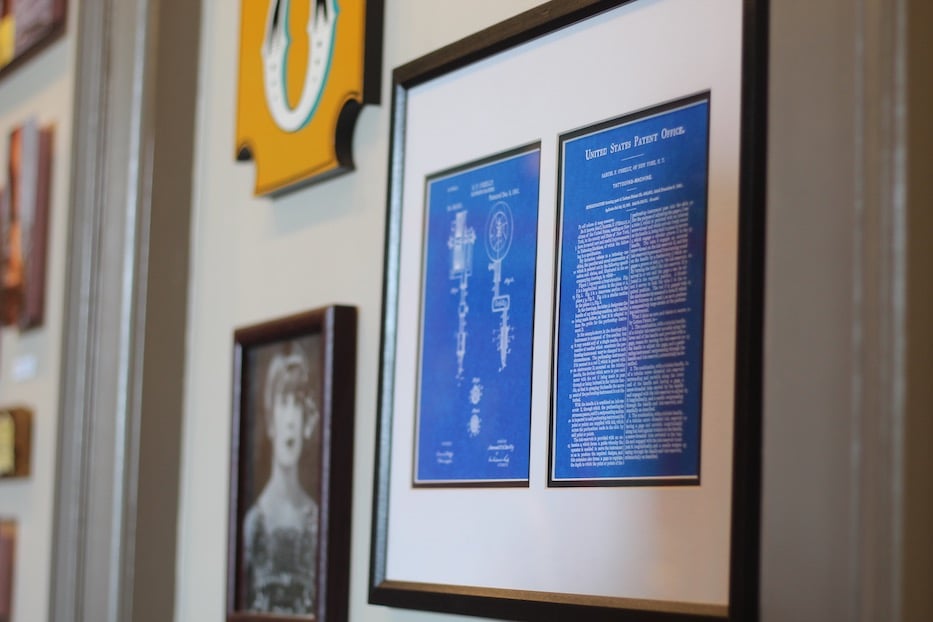
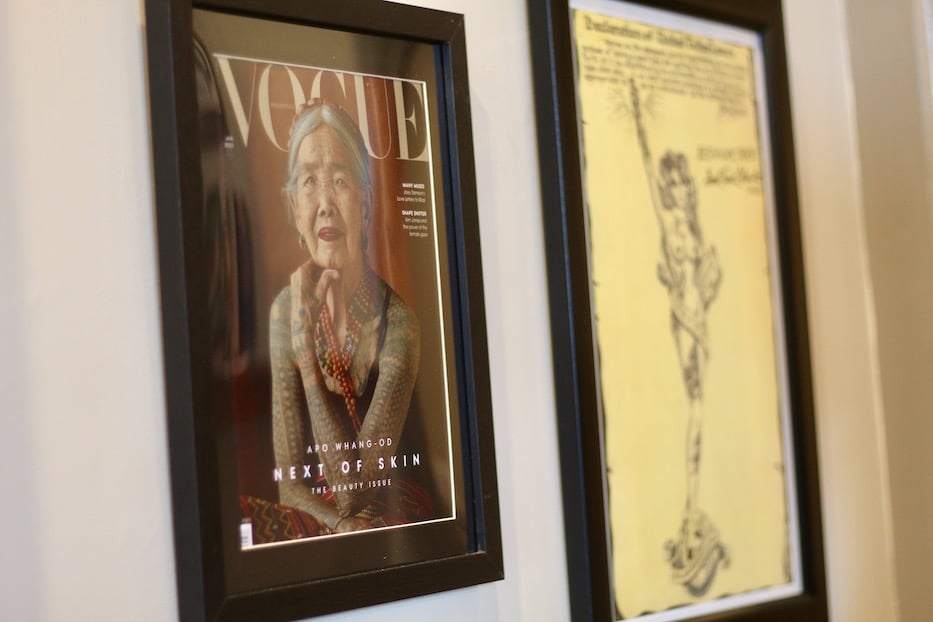
Around them, historical tidbits peek out in every direction: viewers can read over a framed patent for Samuel O’Reilley’s 1891 tattoo gun, which has its roots in the inventor’s Irish immigrant upbringing in Waterbury, marvel at early and contemporary tattoo equipment, learn about New Haven tattoo shops of yore, and stop to pay their respects at a grave rubbing remembering Paul Rodgers, to whom LoPresti refers as “one of the forefathers of American tattooing.”
Throughout, he’s also removed the form from a uniquely Westernized origin story, instead giving credit to the millenia-old, Indigenous and global traditions (Māori, Samoan, and Kalinga are some of the cultures included) from which much tattoo art springs, and has at times been violently appropriated. “It’s providing a little more insight,” he said.
One wall, for instance, features encyclopedia-like illustrations of Māori tattoos, or Tā moko, bringing the contexts of rite and ritual into the space. Another includes the limited-release cover of Vogue on which 106-year-old Apo Whang-Od, the oldest known Filipino tattoo artist or mambabatok, appeared in April of this year. They are reminders, embedded throughout, that tattooing has never belonged exclusively to one culture, and particularly never exclusively to white people.
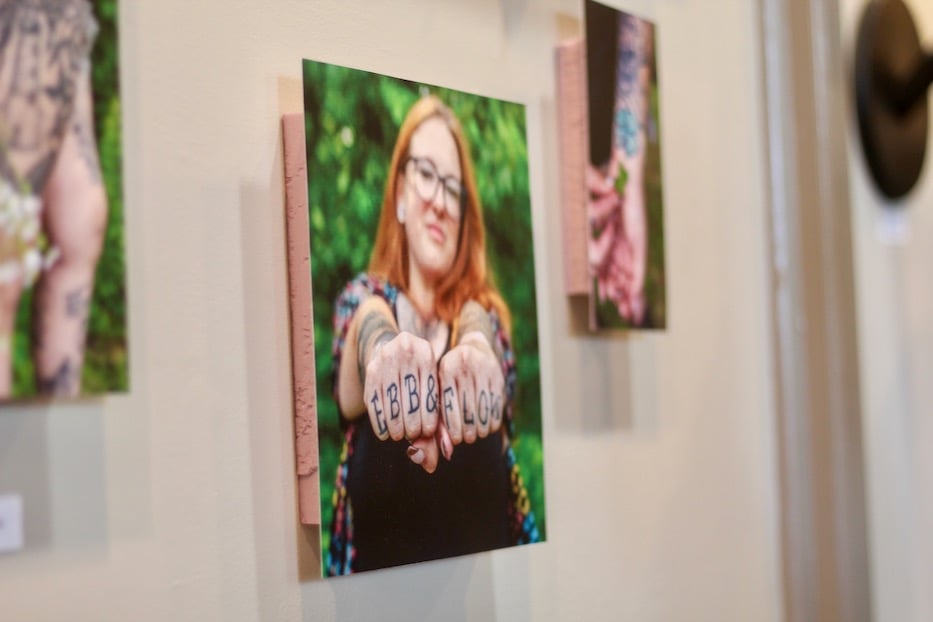
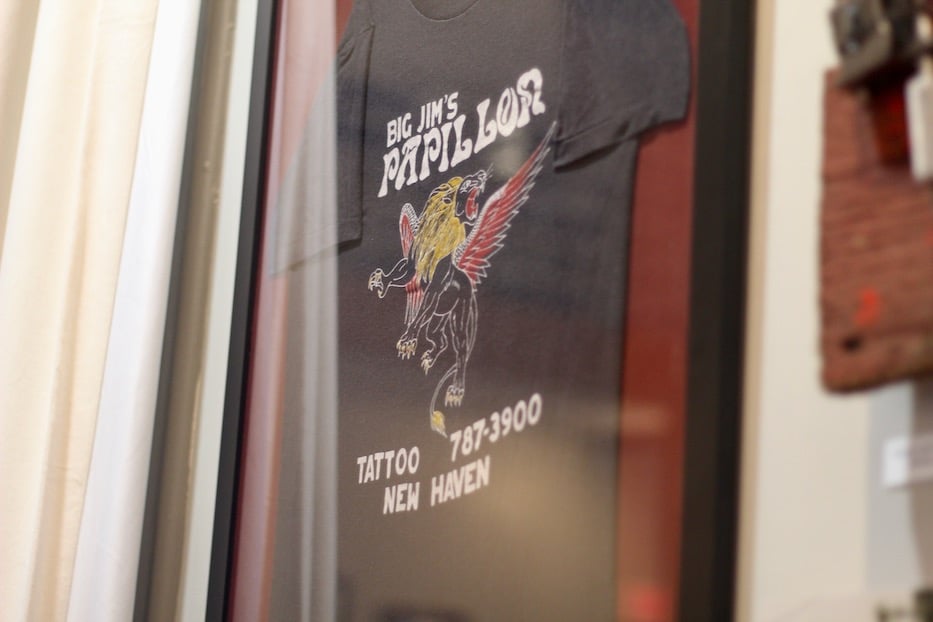
In this sense, he has done the art form a great service, showing the years of apprenticeship, attention to detail, and level of craft that go into making one’s skin into a living canvas. Throughout the exhibition, some of the most joyful and intimate works are those that spring from his own discussions with clients, which photographer Martin Podsiad has captured in vivid and often fine detail. Beneath the portraits, often presented in groups of three, clients have included testimonials about why they get tattoos, and to which designs they are drawn.
“Sitting for a long session equates most closely for me with the marathon running and endurance cycling training that I have done,” reads one such testimonial, from a customer named Josh, whose back is pictured erupting in flames, with a large dragon twisting inside. “It’s not easy. But it has taught me endurance, focus and determination. And these things make my daily troubles seem more manageable.”
These—the most immediate to LoPresti, save a quilt by his mother and a series of painted spoons from Rose—give the show a sense of flow and conversation. More than any other objects, they also make it feel like the artist’s own, paying homage to a form that has become extremely dear to him, and the time and labor that he has poured into this business over the years.
While the show is wide-reaching, nothing about it is fussy or overly high-brow, which seems to fit LoPresti’s personality and approach as an artist. Born and raised in Bridgeport, LoPresti first became interested in tattoos when he was 19, and his older brother came home from the Marine Corps with fresh ink. Inspired by his tattooer, the late Danny Williams, he was soon an apprentice at Physical Graffiti, which still stands in Bridgeport today.
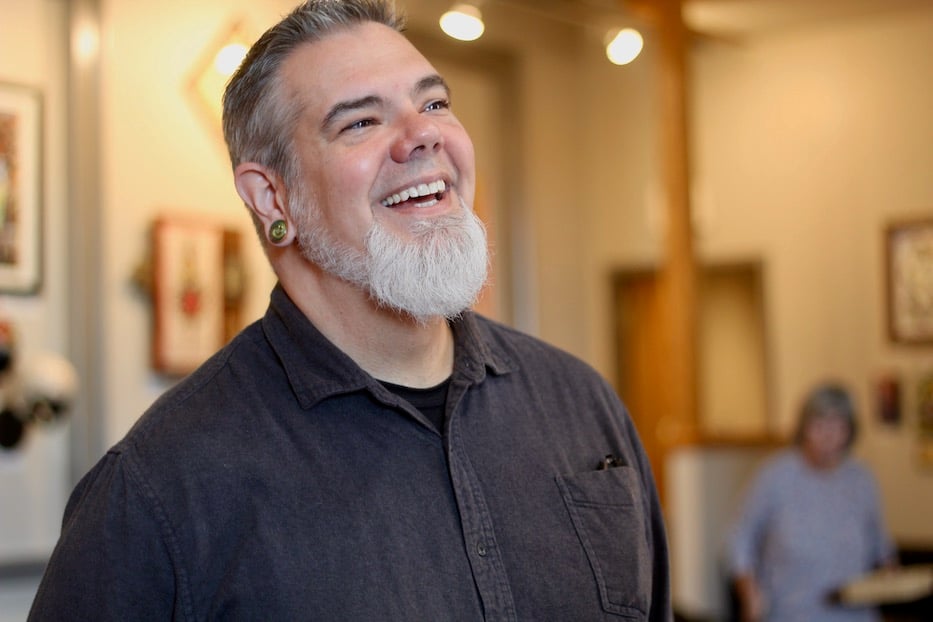
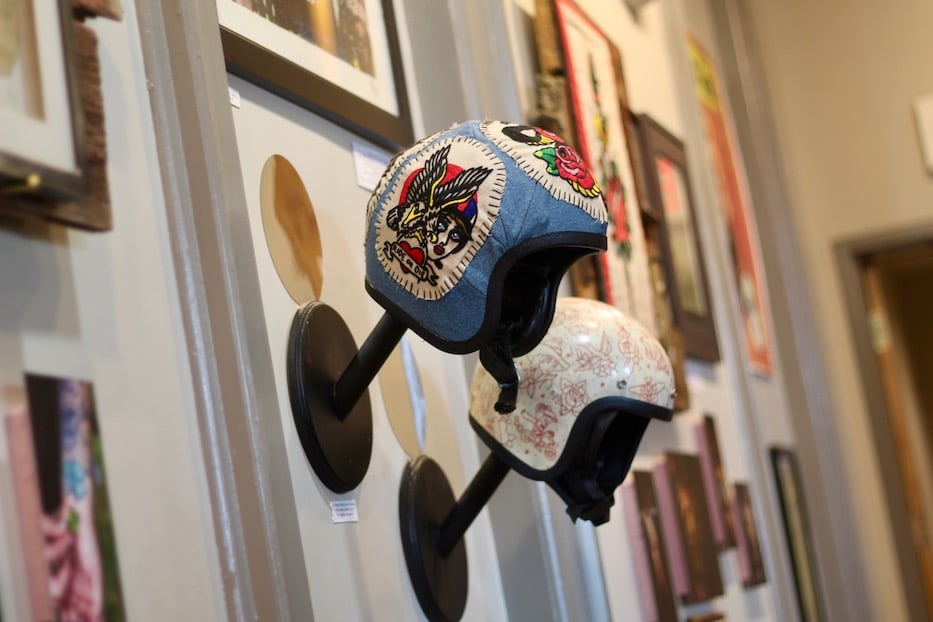
That was the 1990s, when LoPresti was in his early 20s, and “so hungry to learn,” he remembered. From Bridgeport, he moved to a shop called The Edge on Chapel Street in New Haven. To him, the Elm City was thrilling, particularly after years of hearing that it was unsavory and rough around the edges. “It was like this whole other world.”
By 2001, LoPresti was ready to open his own shop. The name—Lucky Soul, which has never changed—came from an expression his dad used around the house when he and his brother were kids. There’s extreme fondness there—originally, his dad urged him to choose a more stable profession. “Ultimately, he was my biggest fan and biggest supporter.” He was a superfan when he passed away in 2012.
After working in the field for three decades and choosing to step into semi-retirement after the pandemic, LoPresti said, a show like Tattoo Tribe feels right on time. For years, he’s been collecting ephemera directly from fellow artists and “old timers” in the tattoo field who are selling off pieces that they’ve had for years. Surrounded by it at the MAC, “I definitely feel a part of the history,” he said.
Tattoo Tribe also has the benefit of its multi-use gallery space, which on any given night of the week might welcome open mic poets, jazz musicians, or actors from two different theater companies who use the stage. In this sense, viewers live with (and hopefully learn from) the work simply by being in the space. The collection, in turn, has a way of making the room feel warm and welcoming, just as a fully set stage often does during productions that take place there.
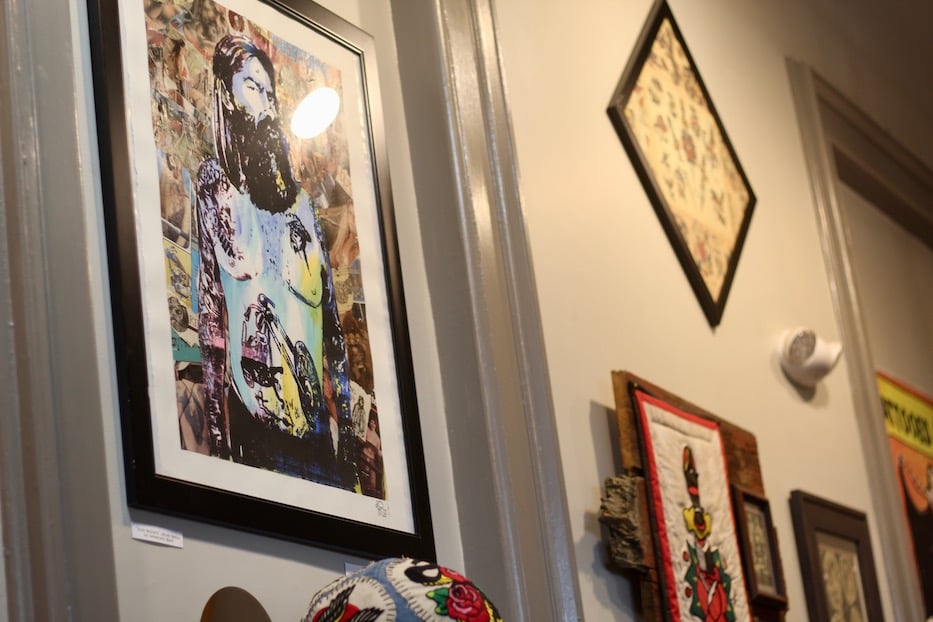
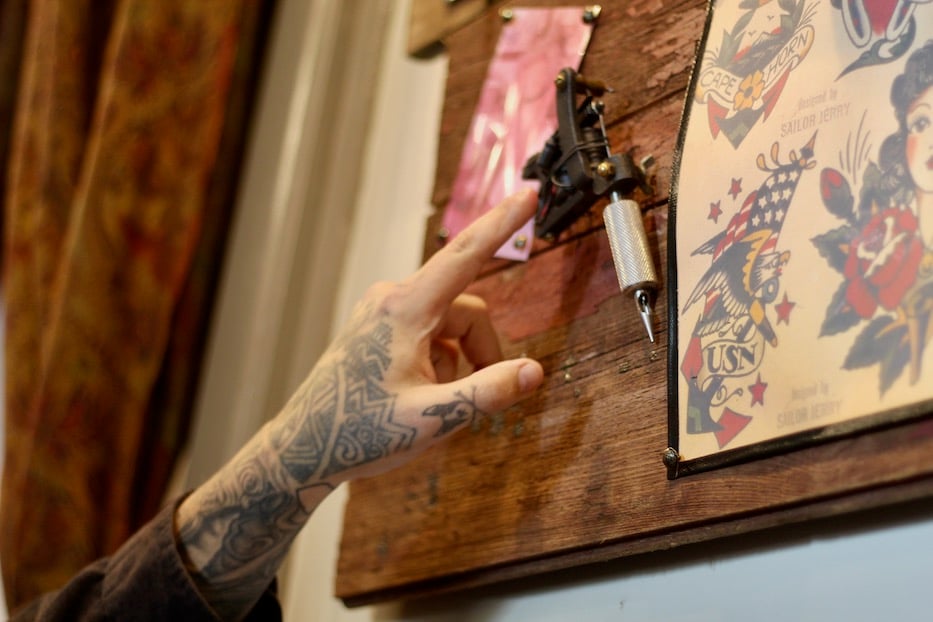
For MAC Executive Director Paige Miglio, it’s also a dream come to fruition. In 2021, Miglio connected with LoPresti through his band Earth Passenger, which was playing a show at the MAC's Firehouse Gallery in Walnut Beach (they will be taking the stage again during the closing reception). It felt like kismet: Miglio has wanted to do a tattoo-related show since arriving at the space a decade ago, but never found an angle that feels just right.
As an artist herself, she said, she’s drawn to tattooing because it’s delicate line work (while she is a self-described “tattoo virgin,” she is still contemplating some ink, probably a constellation or a bee). LoPresti, who has a warm, boyish smile, easy laugh and full sleeves of tattoos, was the artist she'd been waiting for.
“I knew that to make the exhibition genuine, I had to find a doorway,” she said. He was that doorway. “My goal is to be able to hand this space off to an artist and say, ‘Do your thing.’”
The Milford Arts Council is located at 40 Railroad Ave South in Milford. It is open Tuesday through Friday from 12 p.m. to 4 p.m.

